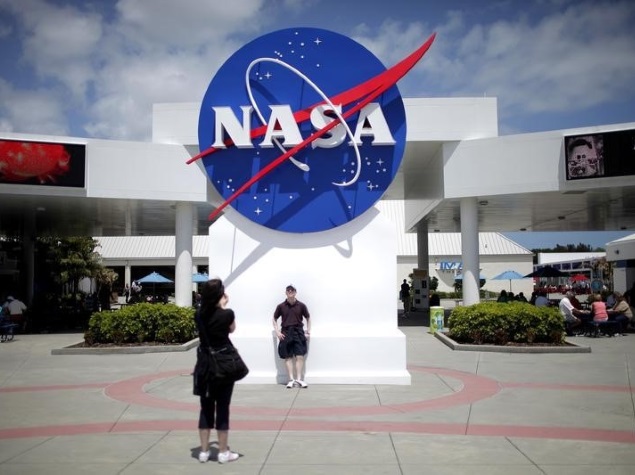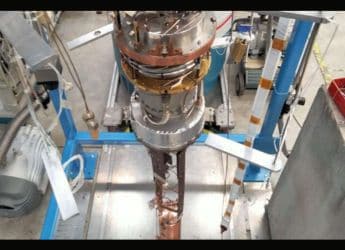- Home
- Science
- Science News
- Nasa Testing 'InSight' Mars Lander for 2016 Mission
Nasa Testing 'InSight' Mars Lander for 2016 Mission

Examining the planet's deep interior could reveal clues about how all rocky planets, including Earth, formed and evolved, Nasa said.
The lander is called InSight or Interior Exploration using Seismic Investigations, Geodesy and Heat Transport.
It is about the size of a car and will be the first mission devoted to understanding the interior structure of the Red planet.
The current testing will help ensure InSight can operate in and survive deep space travel and the harsh conditions of the Martian surface.
The spacecraft will lift off from Vandenberg Air Force Base in California, and land on Mars about six months later.
The technical capabilities and knowledge gained from Insight, and other Mars missions, are crucial to Nasa's journey to Mars, which includes sending astronauts to the Red Planet in the 2030s, the US space agency said.
"Today, our robotic scientific explorers are paving the way, making great progress on the journey to Mars," said Jim Green, director of Nasa's Planetary Science Division at the agency's headquarters here.
"Together, humans and robotics will pioneer Mars and the solar system," said Green.
During the environmental testing phase at Lockheed Martin's Space Systems facility near Denver, the lander will be exposed to extreme temperatures, vacuum conditions of nearly zero air pressure simulating interplanetary space, and a battery of other tests over the next seven months.
The first will be a thermal vacuum test in the spacecraft's "cruise" configuration, which will be used during its seven-month journey to Mars.
In the cruise configuration, the lander is stowed inside an aeroshell capsule and the spacecraft's cruise stage - for power, communications, course corrections and other functions on the way to Mars - is fastened to the capsule.
"The assembly of InSight went very well and now it's time to see how it performs," said Stu Spath, InSight programme manager at Lockheed Martin Space Systems, Denver.
"The environmental testing regimen is designed to wring out any issues with the spacecraft so we can resolve them while it's here on Earth. This phase takes nearly as long as assembly, but we want to make sure we deliver a vehicle to Nasa that will perform as expected in extreme environments," said Spath.
Other tests include vibrations simulating launch and checking for electronic interference between different parts of the spacecraft.
The testing phase concludes with a second thermal vacuum test in which the spacecraft is exposed to the temperatures and atmospheric pressures it will experience as it operates on the Martian surface.
Catch the latest from the Consumer Electronics Show on Gadgets 360, at our CES 2026 hub.
- Samsung Galaxy Unpacked 2025
- ChatGPT
- Redmi Note 14 Pro+
- iPhone 16
- Apple Vision Pro
- Oneplus 12
- OnePlus Nord CE 3 Lite 5G
- iPhone 13
- Xiaomi 14 Pro
- Oppo Find N3
- Tecno Spark Go (2023)
- Realme V30
- Best Phones Under 25000
- Samsung Galaxy S24 Series
- Cryptocurrency
- iQoo 12
- Samsung Galaxy S24 Ultra
- Giottus
- Samsung Galaxy Z Flip 5
- Apple 'Scary Fast'
- Housefull 5
- GoPro Hero 12 Black Review
- Invincible Season 2
- JioGlass
- HD Ready TV
- Laptop Under 50000
- Smartwatch Under 10000
- Latest Mobile Phones
- Compare Phones
- OPPO Reno 15 Pro Max
- Honor Win RT
- Honor Win
- Xiaomi 17 Ultra Leica Edition
- Xiaomi 17 Ultra
- Huawei Nova 15
- Huawei Nova 15 Pro
- Huawei Nova 15 Ultra
- Asus ProArt P16
- MacBook Pro 14-inch (M5, 2025)
- OPPO Pad Air 5
- Huawei MatePad 11.5 (2026)
- Xiaomi Watch 5
- Huawei Watch 10th Anniversary Edition
- Acerpure Nitro Z Series 100-inch QLED TV
- Samsung 43 Inch LED Ultra HD (4K) Smart TV (UA43UE81AFULXL)
- Asus ROG Ally
- Nintendo Switch Lite
- Haier 1.6 Ton 5 Star Inverter Split AC (HSU19G-MZAID5BN-INV)
- Haier 1.6 Ton 5 Star Inverter Split AC (HSU19G-MZAIM5BN-INV)












